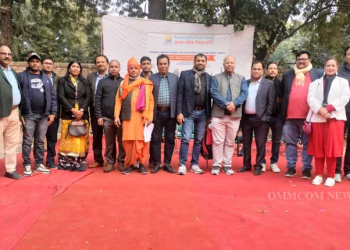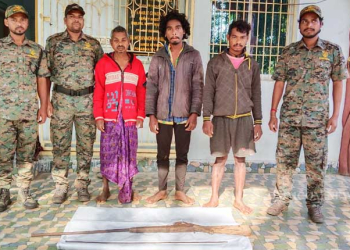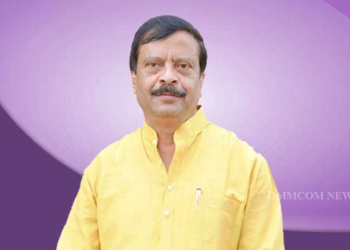Sambalpur: The week-long divine festival of Sital Sasthi in Western Odisha to mark the divine marriage of Lord Shiva with his consort Goddess Parvati (an incarnation of Goddess Sati) commenced today.
It also marks the beginning of the monsoon season. The intense heatwave prior to it symbolizes the severe austerity of Goddess Sati, and with the divine wedding, the farmers celebrate the beginning of the monsoon.
This festival has been celebrated since time immemorial. According to legends, the demon Tarkasur had a boon that he would be killed by Lord Shiva’s son. But Lord Shiva was busy in meditation on Kailash after the death of Sati. So the devtas appealed Shakti to take the form of Parvati and marry Lord Shiva.
Parvati performed rigorous ‘jap’ and ‘tap’ (rigorous devotion and penance) to get Lord Shiva as her husband. On the day of ‘Jyestha Shukla Paksha Sasthi’ Shiva was pleased and satisfied with her austerity, and the divine marriage of Lord Shiva and Goddess Parvati took place.
Sital Sasthi was the marriage day. Later Kartikaya was born who killed Tarakasur.
Facts About The Divine Marriage Celebrations
1. All the rituals are carried on as in any other marriage in the Hindu society. A couple is chosen to play the role of Goddess Parvati’s parents, and they perform every ritual of dutiful parents during a daughter’s wedding.
2. As Lord Shiva is known as ‘Swayam Bhu’, no one plays the role of his parents. (But, this role is also incorporated these days)
3. On the first day which is known as ‘Patra Pendi’, the chosen couple adopts Goddess Parvati and there is the engagement ceremony. The next day, there is ‘Deba Nimantran’ (an invitation to the various temples of the locality).
4. After two days, the idol of the Goddess arrives at the house of her adopted parents. From that house, the bride (idol of Goddess Parvati) is taken in a grand procession on the night of the marriage ceremony.
5. Similarly, Lord Shiva also arrives at the marriage venue escorted with Hindu gods and goddesses. The procession is graced by a large number of transgenders as Lord Shiva is also known as ‘Ardhanarishwara’ (half woman half man). The TGs from all over India congregate for this festival.
6. The marriage is conducted with all the rituals and customs, witnessed by thousands of spectators from the neighbouring places.
7. After the ceremonies, on the following evening, divine couple begin their journey of the town, referred as ‘Nagar Parikrama’. This event is also popularly known as ‘Sital Sasthi Yatra’. Folk music, fold dance and other such events on the streets form the chief attraction of this carnival.
8. During this 5-day-long celebration, streets buzz with activities, and the crowd enjoys the festivities devouring the roadside food.




















